
Image by VLG
If you’re noticing sagging skin, fine lines, or a loss of firmness but aren’t ready for the commitment of a traditional facelift, a laser facelift might be the solution you’ve been looking for. This non-invasive treatment can lift and tighten your skin without surgery, anesthesia, or long recovery times.
Whether you’re looking to address early signs of aging or want a subtle refresh, a laser facelift can help you achieve smoother, more youthful skin with minimal downtime.
Here’s everything you need to know before deciding if it’s right for you.
What is a Laser Facelift?
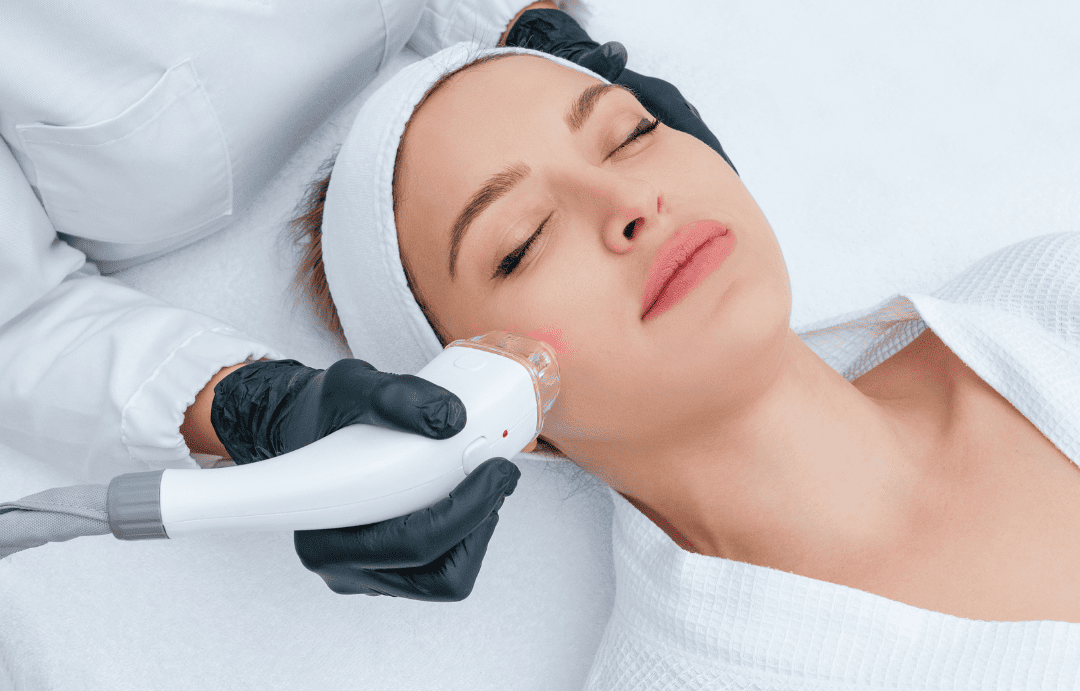
Image by Maria Kray
A laser facelift, or a non-surgical facelift, is a cosmetic procedure that uses advanced laser technology to rejuvenate and tighten the skin without incisions or anesthesia. This procedure addresses common signs of aging, such as sagging skin, wrinkles, and loss of skin elasticity.
Laser facelifts are non-invasive, meaning they don’t require the traditional cuts and stitches that come with a surgical facelift.
Instead, the laser uses controlled energy to target deeper layers of the skin, stimulating the production of collagen and tightening the skin’s underlying structures. The result is a more youthful and refreshed appearance with little downtime.
How it Differs from Traditional Facelifts

Images by RossHelen & elenavagengeim
While a traditional facelift involves cutting the skin, lifting underlying tissues, and removing excess fat to create a more youthful appearance, a laser facelift is far less invasive. Traditional facelifts require general anesthesia and a more extended recovery period and carry the risks associated with surgery, such as scarring and infection.
In contrast, a laser facelift requires no cuts or sutures. Instead, the laser energy is applied directly to the skin, targeting deeper layers to encourage collagen production and tighten the skin. The process is less risky, typically has less downtime, and can be done in a single session without a hospital stay.
However, while a laser facelift can provide impressive results, the degree of lifting and tightening is more modest than that achieved with traditional surgery. A surgical facelift may still be better for individuals looking for more dramatic, long-lasting results.
How a Laser Facelift Works
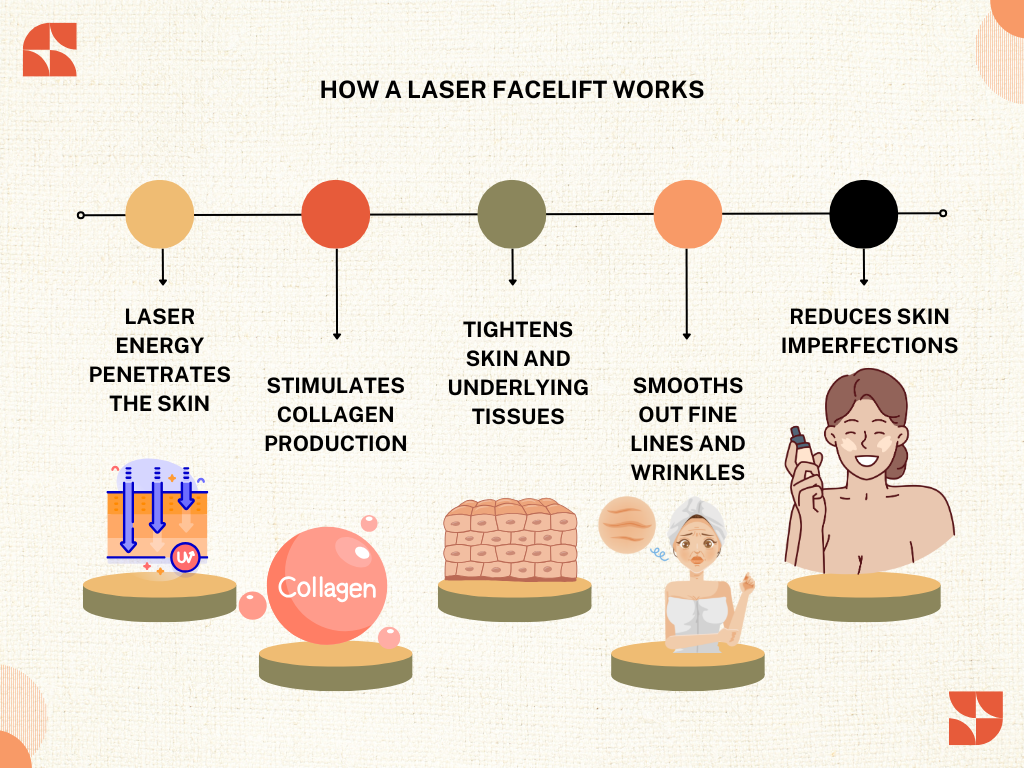
The primary mechanism behind a laser facelift is focused laser energy, which stimulates the skin’s natural processes. Below, we break down how the procedure delivers rejuvenating effects.
The Role of Laser Energy in Stimulating Collagen Production
Collagen is a protein crucial in maintaining the skin’s structure and elasticity. As we age, collagen production naturally declines, contributing to sagging skin, fine lines, and wrinkles. Laser facelifts use targeted laser energy to penetrate the skin and stimulate the production of new collagen.
The laser energy heats the dermis, the deeper layer of the skin, without damaging the outer layer (the epidermis). This thermal effect causes controlled micro-injuries that stimulate the body’s healing response. In response, the skin increases collagen and elastin production, producing firmer, more youthful skin.
How the Laser Targets Skin Layers and Tightens Underlying Tissues
During the treatment, a specialized laser device emits concentrated light energy, which is absorbed by the skin’s water content. This energy penetrates deep into the dermis and subcutaneous tissue, stimulating fibroblasts, cells responsible for collagen production.
The laser also tightens the underlying tissues. As the collagen fibers contract and reorganize, the skin becomes firmer and tautters. This tightening effect is visible over time as the skin gradually improves in texture, tone, and elasticity.
The Effects on Skin Texture, Tone, and Elasticity
Laser facelifts enhance the skin’s texture, tone, and overall appearance. As new collagen forms, it smooths out wrinkles and fine lines, giving the skin a softer, youthful texture. Additionally, the treatment can help reduce the appearance of sun damage, pigmentation issues, and acne scars.
The gradual nature of the results means that laser facelifts produce natural-looking improvements that don’t appear overdone or artificial, unlike more invasive procedures. This subtle transformation helps restore a youthful contour to the face, with skin that feels tighter and looks more radiant.
Types of Non-Surgical Face Lifts Available
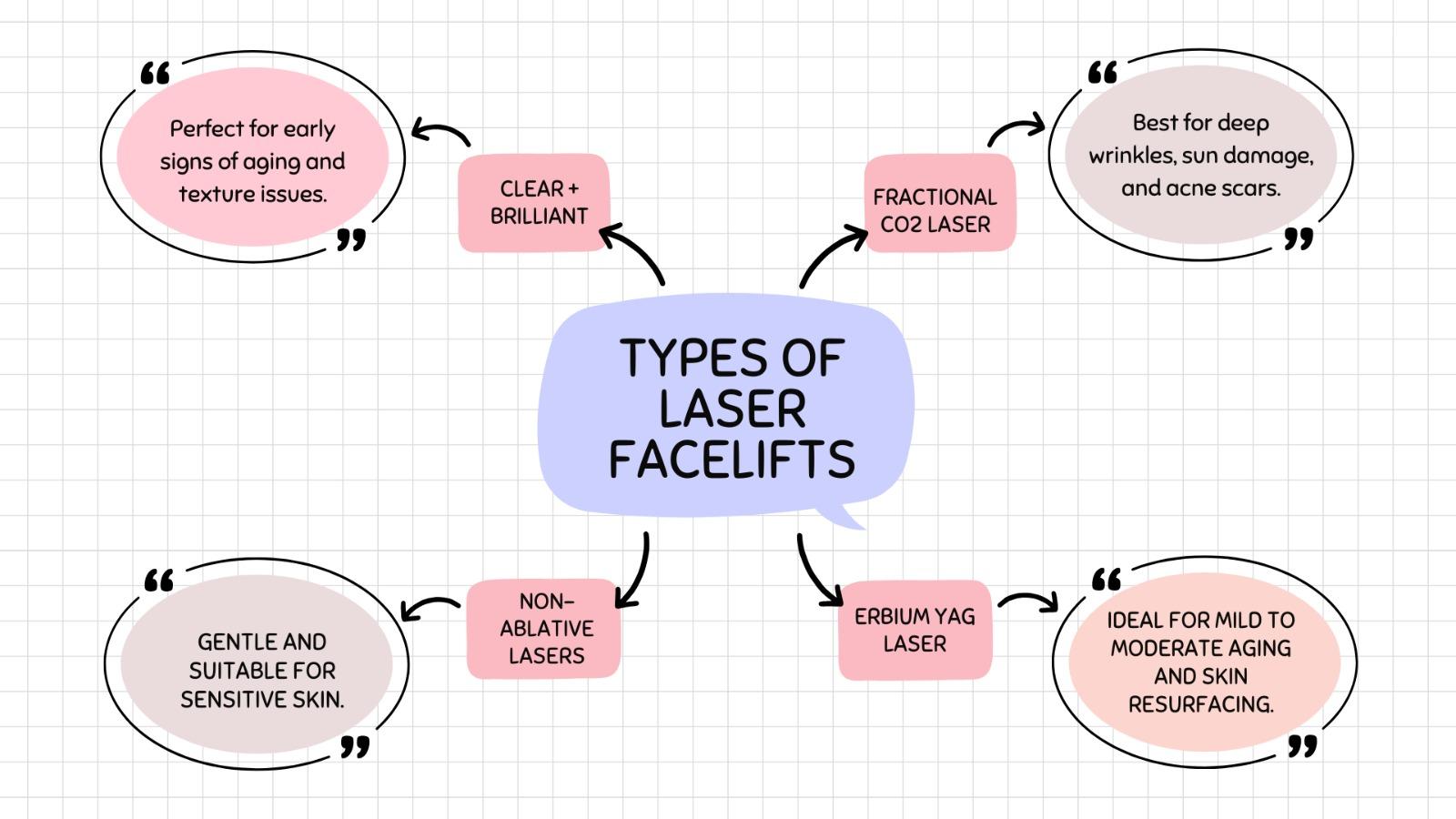
Several laser facelifts are available, each with unique benefits tailored to specific skin concerns. Here are the most common types:
Fractional CO2 Laser
- Best For: People with moderate to severe skin aging, acne scars, sun damage, and deep wrinkles.
- How It Works: The Fractional CO2 laser uses carbon dioxide (CO2) laser beams to target specific layers of the skin. It creates tiny, controlled micro-injuries, stimulating the body’s natural healing process to produce new collagen and elastin. This results in tighter, smoother, and more youthful skin.
- Benefits: Improves skin texture, reduces fine lines and wrinkles, tightens the skin, and treats sun damage, age spots, and acne scars.
Erbium YAG Laser
- Best For: Individuals with mild to moderate skin aging and those seeking more superficial skin resurfacing.
- How It Works: The Erbium YAG laser is a more precise, less invasive laser treatment that removes the outer layer of skin (epidermis) and heats the underlying layers to stimulate collagen production.
- Benefits: Can treat both superficial and deeper skin issues, including fine lines, wrinkles, and uneven skin texture. It causes less thermal damage to surrounding tissue, resulting in a quicker recovery than CO2 lasers
Non-Ablative Lasers (e.g., Nd:YAG, Pulsed Dye Laser)
- Best For: Mild to moderate skin aging, tightening, and improving skin texture. Suitable for those with sensitive skin or looking for a more gradual improvement.
- How It Works: Non-ablative lasers, such as the Nd:YAG and pulsed dye lasers, penetrate the skin without removing the surface layer. These lasers heat more profound layers of the skin to stimulate collagen production, resulting in tighter skin over time.
- Benefits: Non-ablative lasers have less downtime and are gentler on the skin, making them suitable for sensitive skin or those seeking a gentler approach.
Laser Skin Resurfacing (Pixel or Fraxel Laser)
- Best For: Individuals looking for a non-invasive way to treat wrinkles, fine lines, and skin imperfections with minimal downtime.
- How It Works: The Pixel and Fraxel lasers are fractional lasers that treat the skin in micro-zones, leaving the surrounding tissue intact to promote faster healing. These lasers target the epidermis and dermis layers to stimulate collagen production and reduce imperfections like fine lines, acne scars, and sun damage.
- Benefits: Improves skin texture, reduces wrinkles, and diminishes hyperpigmentation, scarring, and sun damage.
Clear + Brilliant Laser
- Best For: Early signs of aging, fine lines, and skin texture issues. Suitable for people with mild skin concerns.
- How It Works: Clear + Brilliant is a gentle, non-ablative laser treatment that creates microscopic treatment zones in the skin. It stimulates the production of new skin cells and collagen without damaging the skin’s surface.
- Benefits: Improves skin tone, texture, and firmness. It’s often referred to as a “prejuvenation” treatment for younger individuals or a gentle skin refresh for older clients.
Laser Facelift with HIFU (High-Intensity Focused Ultrasound) Source
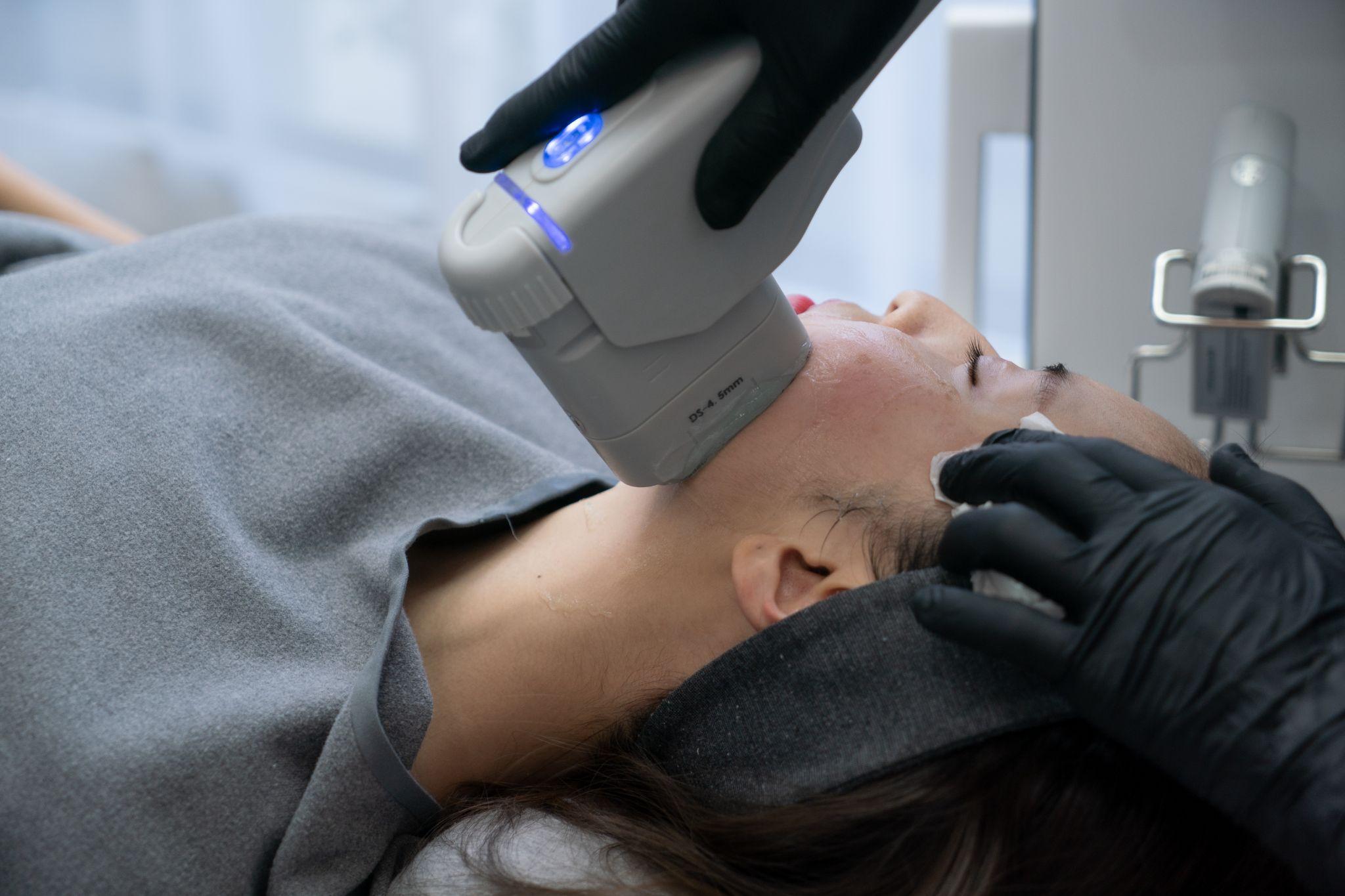
- Best For: Mild to moderate sagging and skin tightening for individuals who want a lift without surgery.
- How It Works: While technically an ultrasound treatment, HIFU is often combined with laser facelifts. The laser stimulates the skin surface, while HIFU reaches more profound layers of the skin, stimulating collagen and elastin production for a firmer, more lifted appearance.
- Benefits: It combines the skin-surface tightening of lasers with deep tissue stimulation of ultrasound. It can achieve a lifting effect similar to a surgical facelift without incisions.
Intense Pulsed Light (IPL)
- Best For: Individuals with mild to moderate sun damage, pigmentation issues, or uneven skin tone.
- How It Works: IPL is a light-based technology, rather than a laser, that uses broad-spectrum light to target various layers of the skin. It breaks down pigment, improves blood flow, and stimulates collagen production.
- Benefits: It treats sun damage, age spots, broken capillaries, and uneven skin tone. It also stimulates collagen production to tighten skin and improve texture.
Laser Tightening (e.g., Titan, Ultherapy)
- Best For: Mild to moderate skin sagging and those looking for non-invasive tightening.
- How It Works: Laser tightening treatments like Titan use infrared light to penetrate the skin and heat the dermal layers, stimulating collagen production and tightening loose skin. Ultherapy, often categorized with lasers, uses ultrasound but is combined with light-based therapy in some practices for an enhanced lift.
- Benefits: It gradually lifts and tightens the skin, helping to reduce fine lines and wrinkles and providing a more youthful appearance.
Picosecond Lasers (e.g., PicoSure)
- Best For: Treating stubborn pigmentation, acne scars, and skin rejuvenation.
- How It Works: Picosecond lasers like PicoSure use high-speed pulses of light to target, break up pigment, and stimulate collagen production. The rapid pulses effectively target deeper skin layers without causing excessive heat damage.
- Benefits: Improves skin texture, reduces pigmentation, and stimulates collagen. It is often used for skin rejuvenation, acne scarring, and pigmentation issues.
Laser Facelift with RF (Radiofrequency) Technology
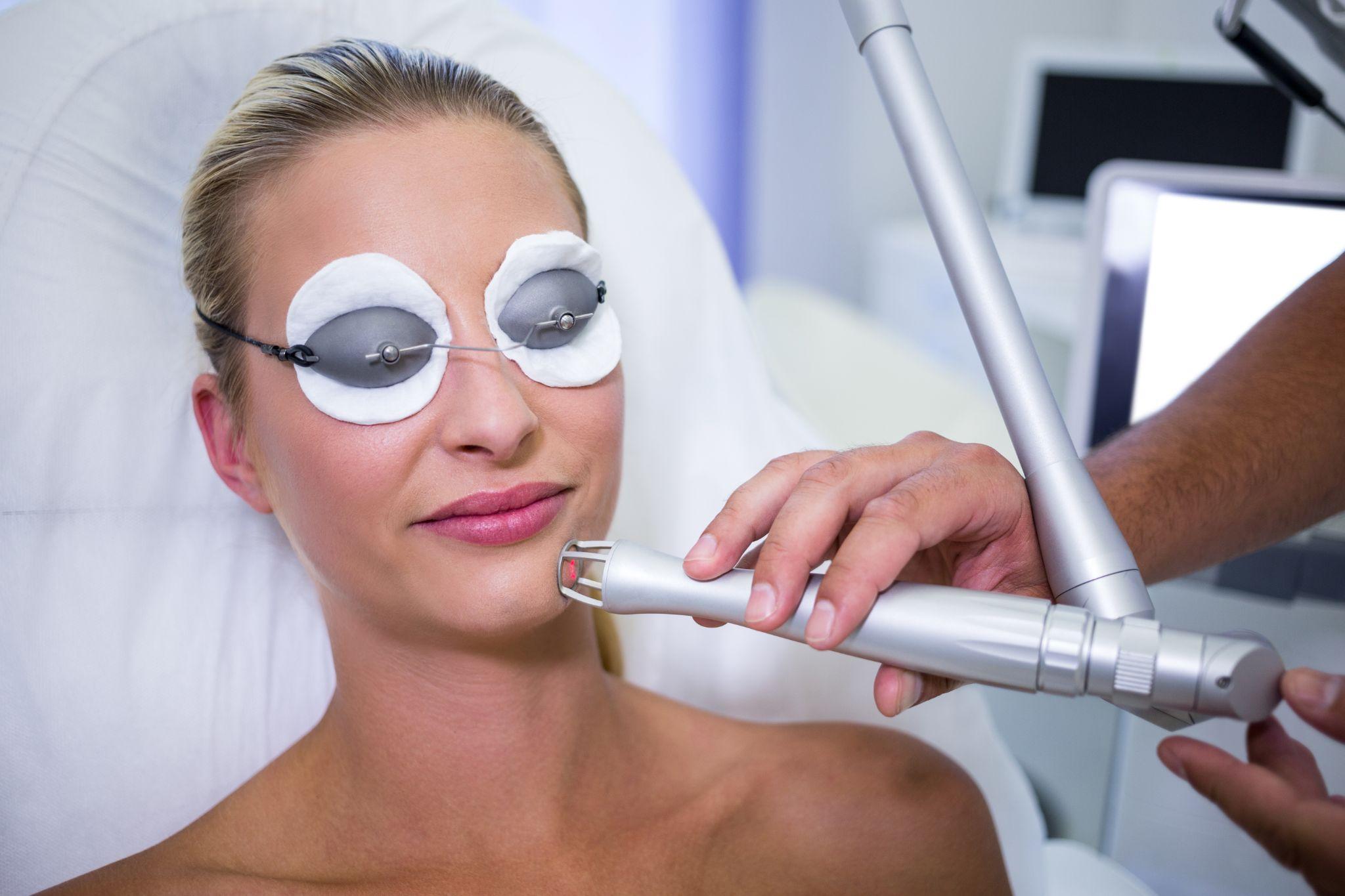
Source: wavebreakmedia_micro
- Best For: Those seeking to lift and tighten sagging skin with no recovery time.
- How It Works: Some laser facelifts incorporate RF energy to heat deeper skin layers while stimulating collagen production. RF energy promotes skin tightening and lifting effects by stimulating fibroblast activity in the dermis.
- Benefits: Skin tightening, wrinkle reduction, and lifting of sagging skin with minimal discomfort.
Benefits of a Non-Surgical Laser Facelift
Laser facelifts offer several advantages over traditional facelift surgery. Below are the most notable benefits:
- Minimal Downtime and Recovery Period: One of the most significant benefits of a laser facelift is its minimal downtime. Unlike a surgical facelift, which may require weeks of recovery, laser facelifts typically have minimal downtime. Most people can resume normal activities within a few days. There may be mild redness or swelling immediately after the treatment, but this typically subsides within a few hours or days.
- No Need for General Anesthesia or Surgical Risks: Since the procedure is non-invasive, there is no need for general anesthesia or the risks associated with surgery, such as infections, scarring, or blood loss. This makes the laser facelift safer for individuals hesitant about going under the knife.
- Natural-Looking Results That Improve Gradually: The results of a laser facelift develop gradually over a few weeks to months as collagen production increases and the skin tightens. This progressive improvement helps avoid the sudden, dramatic changes that sometimes occur with surgical facelifts, giving the results a more natural appearance.
- Suitable for a Wide Range of Skin Types and Ages: Laser facelifts are versatile treatments that can be customized to suit various skin types and ages. Whether you’re in your 30s looking to prevent signs of aging or in your 50s or 60s seeking to reverse visible signs of aging, a laser facelift can provide effective results. The procedure can also be adapted to different skin tones, making it suitable for a broad demographic.
- Non-Invasive with Little to No Scarring: Because no incisions are made during a laser facelift, there is no risk of visible scarring, unlike traditional facelifts, which can leave scars around the ears or hairline. Laser facelifts, therefore, offer a more aesthetically pleasing option with minimal post-treatment marks.
Ideal Candidates for a Laser Facelift
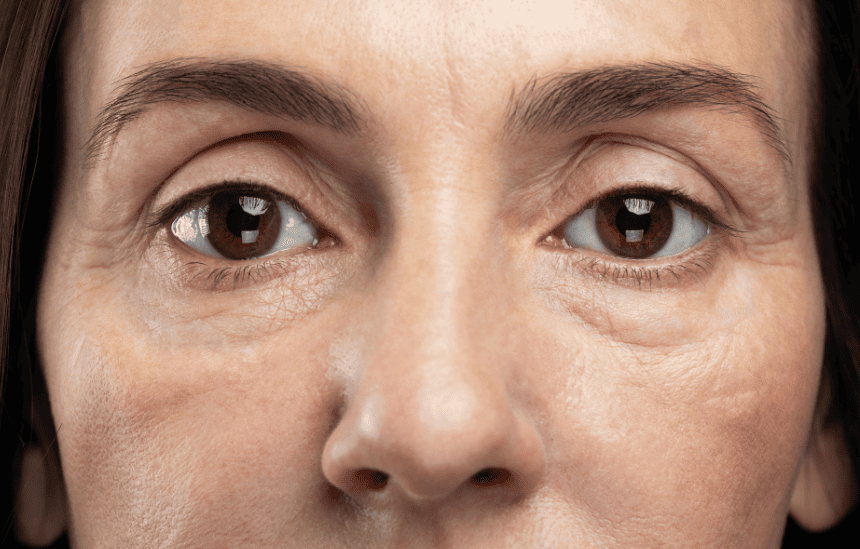
Image by A’s Images
The ideal candidates for this treatment typically include:
- Individuals with mild to moderate skin aging: Those experiencing sagging skin, fine lines, or mild wrinkles may benefit from the tightening effects of laser facelifts.
- People with good skin elasticity: The procedure works best for those whose skin can still tighten, allowing the treatment to have noticeable results.
- Patients seeking a non-surgical alternative: Laser facelifts are ideal for those who want the benefits of a facelift without the risks, scars, or lengthy recovery associated with surgery.
- Healthy individuals with realistic expectations: As with any aesthetic procedure, candidates must be healthy and clearly understand what the treatment can and cannot achieve.
While laser facelifts can benefit a wide range of people, consulting with a licensed practitioner is essential to determine if you’re a good candidate based on your skin type, goals, and overall health.
While laser facelifts can benefit a wide range of people, consulting with a licensed practitioner is essential to determine if you’re a good candidate based on your skin type, goals, and overall health. If you’re considering a laser facelift, Laser Forefront offers personalized consultations and professional treatments tailored to your needs. Reach out today to schedule your consultation and take the first step toward rejuvenating your skin with non-invasive laser technology.
Laser Facelift Procedure – What to Expect
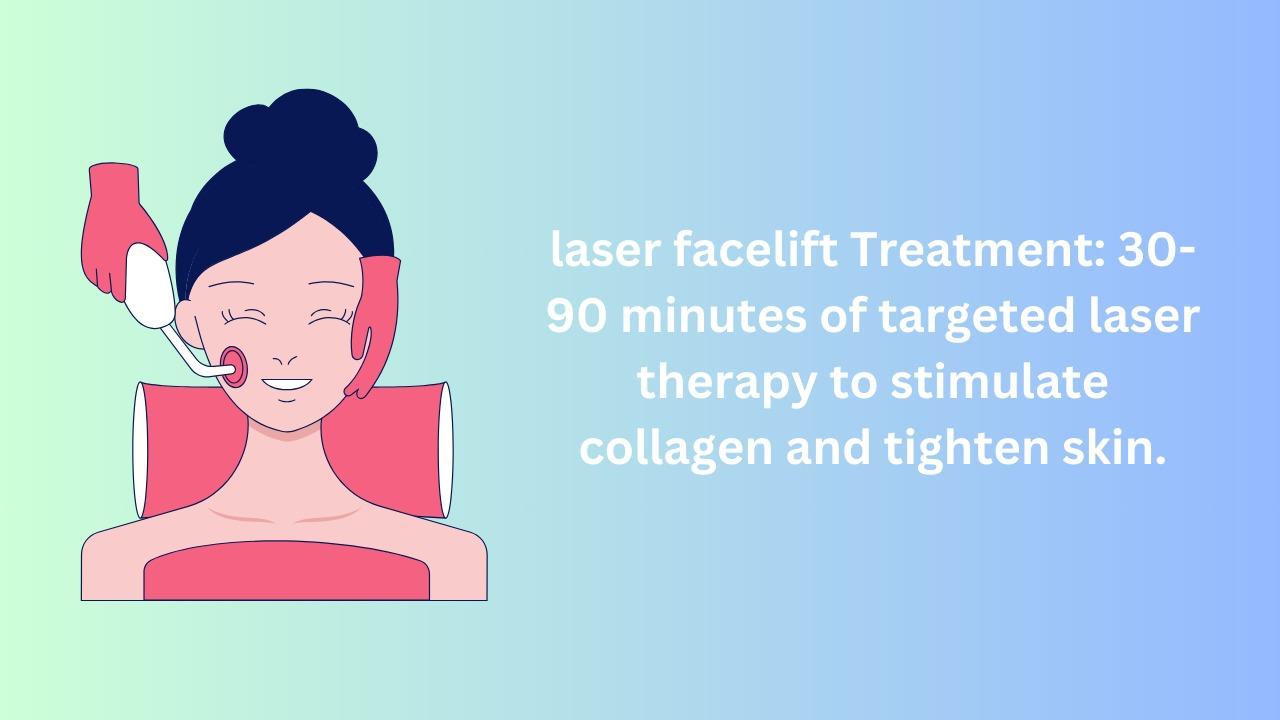
Source: healthline
Here’s what you can expect during the procedure:
Pre-Treatment Consultation
Before your procedure, you’ll consult a dermatologist or plastic surgeon. They’ll review your medical history, assess your skin, and discuss your goals. Expect to hear about the type of laser best suited for you and the expected results and treatment plan.
The Procedure
- Preparation: Your skin will be cleansed, and a topical numbing cream will be applied. The procedure typically lasts 30-90 minutes, depending on the area treated.
- Laser Application: A handheld device delivers targeted light to stimulate collagen and tighten skin. During the treatment, you may feel mild tingling or warmth.
- Cooling: After the procedure, soothing gel or cooling devices reduce redness or swelling.
Post-Treatment Care
- Immediate Aftercare: Mild redness and swelling are common and usually subside within a few hours to days. Some bruising or dryness may occur.
- Recovery Timeline:
- First Few Days: Redness and mild swelling may persist.
- 1 Week: Most patients can resume normal activities, with only minor redness or peeling.
- Full Results: Skin will improve over 3-6 months as collagen production increases.
- Longevity of Results
- Duration: Results can last anywhere from 1 to 2 years, depending on factors like skin type, age, and lifestyle. While a laser facelift won’t stop the natural aging process, the skin will appear more youthful for an extended period.
- Maintenance: Some patients use touch-up treatments every 6-12 months to maintain the effects.
- Care Tips: Avoid sun exposure, use sunscreen, and moisturize the area. Follow your doctor’s aftercare instructions to maximize results.
Risks and Side Effects
While laser facelifts are considered safe for most patients, there are some potential risks and side effects to be aware of:
- Redness and Swelling: Mild redness and swelling are common in the first few days following the procedure. These side effects are usually temporary and subside within a week.
- Hyperpigmentation or Hypopigmentation: Changes in skin pigmentation can occur, particularly for individuals with darker skin tones, though this is rare.
- Infection: Though uncommon, infection can occur if the skin is not adequately cared for post-treatment. Following the aftercare instructions provided by your provider is crucial.
- Scarring: In rare cases, laser treatment can cause scarring. This is more likely if the treatment area is overexposed or proper aftercare needs to be followed.
- Sensitivity: Your skin may be more sensitive to sunlight immediately after the procedure. To protect your skin, avoid sun exposure and wear sunscreen for several weeks.
Does a Laser Facelift Work?
A laser facelift effectively improves skin texture, reduces wrinkles, and tightens sagging skin by stimulating collagen production. While it won’t deliver the same dramatic results as a surgical facelift, it provides a non-invasive way to rejuvenate the skin and achieve a youthful appearance.
How Long Does a Laser Facelift Last?
The results of a laser facelift can last 1-2 years, depending on factors such as your skin type, age, and lifestyle. While the visible signs of aging will naturally continue to develop, the improvements from the treatment can remain for a long time. Additionally, skin may continue to improve for up to 1 year after the procedure
What Does a Laser Facelift Cost?
The cost of a laser facelift can vary, but it typically ranges from $1,500 to $5,000 per session. The exact cost depends on the type of laser used, the clinic, and the treated area. According to the American Society of Plastic Surgeons, the average cost of skin resurfacing procedures like laser skin resurfacing is $1,829. Additional treatments or follow-up care may increase the overall price.
Which Laser Is Best for a Facelift?
The fractional CO2 laser and Erbium laser are commonly used for facelifts. These lasers penetrate deeper layers of skin to stimulate collagen production and are effective at improving skin texture and firmness. The choice of laser will depend on your skin type, concerns, and the level of improvement you’re aiming for.
Is Laser on the Face Permanent?
While a laser facelift can improve scarring, it is not permanent for the visible signs of aging. Once scars are treated and improved, they will not return. However, the skin will continue to age naturally, so wrinkles and skin tone results may gradually diminish. To maintain results, follow-up treatments may be necessary.

